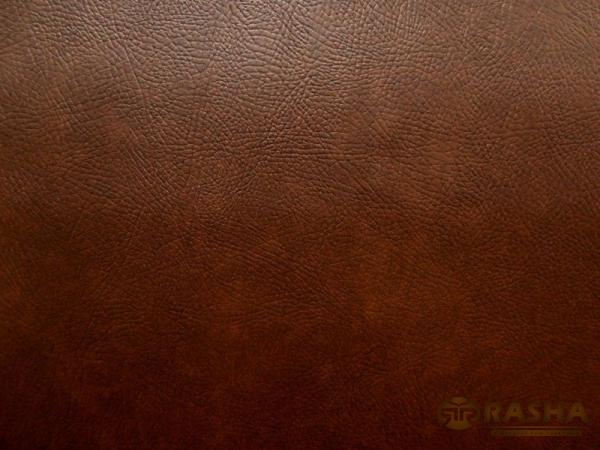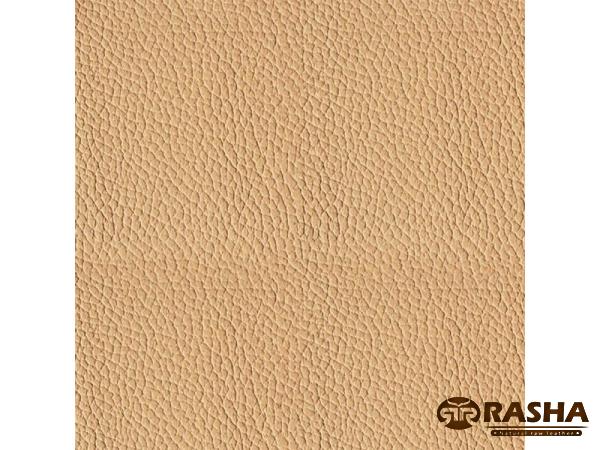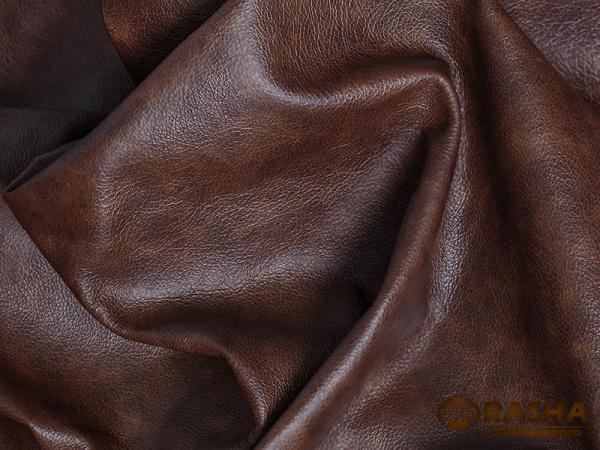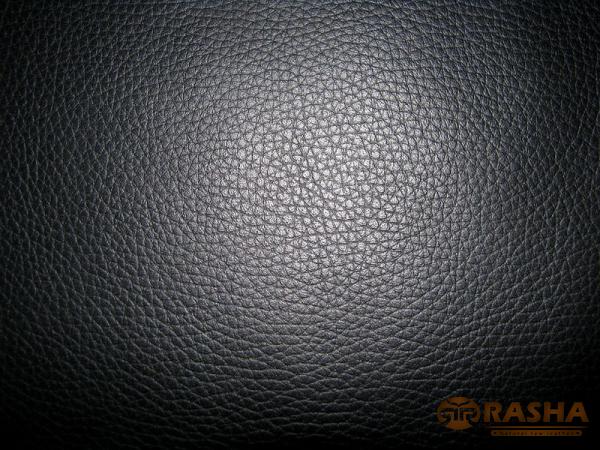Nubuck leather is a top-grain leather that has been sanded or buffed on the grain side to create a unique, velvety texture. Renowned for its softness and durability, nubuck leather is a popular choice for various applications, including footwear, handbags, furniture, and automotive upholstery. In this summary, we will explore the characteristics, production process, applications, and care instructions for nubuck leather. Characteristics of Nubuck Leather: 1. Softness: Nubuck leather is exceptionally soft and supple, making it a luxurious and comfortable material. Its velvety texture adds a touch of elegance to any product made from it. 2. Durability: Thanks to its top-grain quality, nubuck leather is highly durable and resistant to wear and tear. It boasts excellent abrasion resistance, making it an ideal choice for items that require longevity. 3. Breathability: Nubuck leather is naturally breathable, allowing air to pass through the material and providing comfort even during extended use. 4. Water resistance: While nubuck leather is not completely waterproof, it has inherent water-resistant properties. However, it is important to note that excessive exposure to water can still cause damage to the material. 5. Unique appearance: Nubuck leather’s distinct appearance is characterized by its brushed, matte finish and slight nap. This gives it a rustic and sophisticated appeal. Production Process of Nubuck Leather: The production process for nubuck leather involves several key steps: 1. Selection of high-quality hides: The process begins by carefully selecting premium hides, usually sourced from cattle, that possess the desired characteristics for nubuck leather. 2. Preparation: The hides are thoroughly cleaned to remove any dirt, oils, or unwanted substances. This step is crucial to ensure the end product is of the highest quality. 3. Finishing: The top-grain layer is separated from the rawhide and prepared for the nubuck finish. The grain side is then sanded or buffed using abrasive materials to create a soft, brushed appearance. 4. Dyeing and color application: Once the desired texture is achieved, the nubuck leather is dyed with the desired color. This step allows for a wide variety of hues and shades to be produced. 5. Application of protective coatings: To enhance durability and resist staining, a protective coating is typically applied to the nubuck leather. This step helps prevent spills, oils, and dirt from penetrating the material. 6. Final inspection and quality control: Before the finished nubuck leather is deemed ready for use, it undergoes a thorough inspection to ensure quality standards are met. This includes evaluating the texture, color consistency, and overall appearance. Applications of Nubuck Leather: 1. Footwear: Nubuck leather is commonly used in the production of high-end shoes, boots, and sneakers.

leather
 Its softness and durability make it an excellent choice for comfortable and long-lasting footwear. 2. Handbags and accessories: Nubuck leather adds a touch of sophistication and luxury to handbags, wallets, belts, and other accessories. Its velvety texture and unique appearance make these items stand out. 3. Furniture and upholstery: Nubuck leather is widely utilized in the furniture industry for sofas, armchairs, and ottomans. Its soft texture and durability make it a popular alternative to traditional leather. 4. Automotive upholstery: Nubuck leather is often found in high-end vehicles, particularly in luxury car interiors. Its elegant appearance and superior quality contribute to a refined driving experience. 5. Clothing and fashion: Nubuck leather is also used in the production of jackets, coats, and other fashion garments. Its softness and ability to drape well make it a favored choice in the world of fashion. Care Instructions for Nubuck Leather: Taking proper care of nubuck leather is essential to maintain its beauty and extend its lifespan: 1. Regular cleaning: Remove surface dust and dirt from nubuck leather using a soft brush or cloth. Be gentle to avoid damaging the material. 2. Handling spills: Blot spills immediately with a clean cloth. Do not rub as it may cause the stain to set. For stubborn stains, consult a professional leather cleaner. 3. Protection from water: Nubuck leather is not completely waterproof, so it’s important to protect it from excessive exposure to water. Use a water repellent spray specifically designed for nubuck leather to add a protective layer. 4. Avoid heat and direct sunlight: Prolonged exposure to heat and direct sunlight can cause the color of nubuck leather to fade. Store items made of nubuck leather in cool, dry places away from direct sunlight. 5. Professional cleaning and conditioning: Periodically, it is beneficial to seek professional cleaning and conditioning for nubuck leather items. This helps rejuvenate the material and maintain its softness and luster. Conclusion: Nubuck leather is a top-grain leather material that combines softness, durability, and a unique velvety texture. With its versatile applications in various industries, nubuck leather adds a touch of luxury and sophistication to footwear, handbags, furniture, automotive upholstery, and fashion garments. By following proper care instructions, including regular cleaning, protection from water and sunlight, and occasional professional maintenance, nubuck leather products can maintain their beauty and last for many years to come. I. The Luxurious Appeal of Nubuck Leather Nubuck leather has a distinct elegance that adds a touch of luxury to any product. Its soft and velvety texture sets it apart from other leather types, making it highly sought after in the market. This luxurious appeal makes nubuck leather a popular choice for high-end fashion brands, furniture manufacturers, and automotive companies.
Its softness and durability make it an excellent choice for comfortable and long-lasting footwear. 2. Handbags and accessories: Nubuck leather adds a touch of sophistication and luxury to handbags, wallets, belts, and other accessories. Its velvety texture and unique appearance make these items stand out. 3. Furniture and upholstery: Nubuck leather is widely utilized in the furniture industry for sofas, armchairs, and ottomans. Its soft texture and durability make it a popular alternative to traditional leather. 4. Automotive upholstery: Nubuck leather is often found in high-end vehicles, particularly in luxury car interiors. Its elegant appearance and superior quality contribute to a refined driving experience. 5. Clothing and fashion: Nubuck leather is also used in the production of jackets, coats, and other fashion garments. Its softness and ability to drape well make it a favored choice in the world of fashion. Care Instructions for Nubuck Leather: Taking proper care of nubuck leather is essential to maintain its beauty and extend its lifespan: 1. Regular cleaning: Remove surface dust and dirt from nubuck leather using a soft brush or cloth. Be gentle to avoid damaging the material. 2. Handling spills: Blot spills immediately with a clean cloth. Do not rub as it may cause the stain to set. For stubborn stains, consult a professional leather cleaner. 3. Protection from water: Nubuck leather is not completely waterproof, so it’s important to protect it from excessive exposure to water. Use a water repellent spray specifically designed for nubuck leather to add a protective layer. 4. Avoid heat and direct sunlight: Prolonged exposure to heat and direct sunlight can cause the color of nubuck leather to fade. Store items made of nubuck leather in cool, dry places away from direct sunlight. 5. Professional cleaning and conditioning: Periodically, it is beneficial to seek professional cleaning and conditioning for nubuck leather items. This helps rejuvenate the material and maintain its softness and luster. Conclusion: Nubuck leather is a top-grain leather material that combines softness, durability, and a unique velvety texture. With its versatile applications in various industries, nubuck leather adds a touch of luxury and sophistication to footwear, handbags, furniture, automotive upholstery, and fashion garments. By following proper care instructions, including regular cleaning, protection from water and sunlight, and occasional professional maintenance, nubuck leather products can maintain their beauty and last for many years to come. I. The Luxurious Appeal of Nubuck Leather Nubuck leather has a distinct elegance that adds a touch of luxury to any product. Its soft and velvety texture sets it apart from other leather types, making it highly sought after in the market. This luxurious appeal makes nubuck leather a popular choice for high-end fashion brands, furniture manufacturers, and automotive companies.
Specifications of leather
 In the world of fashion, nubuck leather is often used to create sophisticated jackets, coats, and accessories. Its unique appearance and supple feel make it an ideal fabric for designers looking to create stylish and luxurious garments. From designer handbags to wallets and belts, nubuck leather is a versatile material that elevates the overall aesthetic and value of fashion items. Furniture manufacturers also appreciate the luxurious appeal of nubuck leather. Its soft and smooth texture adds a touch of sophistication to sofas, chairs, and ottomans. Whether used in traditional or contemporary designs, nubuck leather upholstery enhances the overall aesthetic while providing maximum comfort and durability. Additionally, nubuck leather is a material of choice for luxury car interiors. Automotive companies opt for nubuck leather to create an opulent and refined driving experience. The luxurious feel and elegant appearance of nubuck leather add a premium touch to the cabin, enhancing the overall appeal of high-end vehicles. II. The Durability and Longevity of Nubuck Leather One of the key benefits of nubuck leather is its exceptional durability. As a top-grain leather, nubuck leather is made from the strongest part of the hide, ensuring its longevity and resistance to wear and tear. This makes it a preferred choice for items that require durability, such as footwear, furniture, and accessories. Nubuck leather’s outstanding abrasion resistance allows it to withstand regular use without showing signs of aging or degradation. Unlike other leather types that may develop creases or cracks over time, nubuck leather maintains its original shape and remains resilient even after prolonged usage. Its durability ensures that products made from nubuck leather will not only look great but also stand the test of time. III. The Breathability and Comfort of Nubuck Leather Breathability is another important characteristic of nubuck leather. The material allows air to circulate, providing a comfortable and cool experience, particularly when used in footwear. The natural breathability of nubuck leather prevents moisture buildup and keeps the feet dry, reducing the risk of discomfort or unpleasant odors. Nubuck leather’s breathability also extends to other applications, such as furniture and fashion. When used in upholstery, nubuck leather provides a comfortable seating experience, as it does not retain heat like synthetic materials. Furthermore, wearing garments made from nubuck leather allows for better air circulation, ensuring a comfortable and fresh feeling throughout the day. IV. Water Resistance and Care for Nubuck Leather While nubuck leather possesses water-resistant properties, it is important to note that it is not completely waterproof. The material can withstand light exposure to water, such as small spills or light rain, without getting damaged. However, prolonged exposure to water can cause discoloration, and excessive moisture can lead to the growth of mold or mildew. To maintain the overall quality and appearance of nubuck leather, proper care and maintenance are essential. Regular cleaning using a soft brush or cloth helps remove surface dirt and prevents it from settling into the leather. For spills, blotting with a clean cloth is recommended to absorb excess liquid.
In the world of fashion, nubuck leather is often used to create sophisticated jackets, coats, and accessories. Its unique appearance and supple feel make it an ideal fabric for designers looking to create stylish and luxurious garments. From designer handbags to wallets and belts, nubuck leather is a versatile material that elevates the overall aesthetic and value of fashion items. Furniture manufacturers also appreciate the luxurious appeal of nubuck leather. Its soft and smooth texture adds a touch of sophistication to sofas, chairs, and ottomans. Whether used in traditional or contemporary designs, nubuck leather upholstery enhances the overall aesthetic while providing maximum comfort and durability. Additionally, nubuck leather is a material of choice for luxury car interiors. Automotive companies opt for nubuck leather to create an opulent and refined driving experience. The luxurious feel and elegant appearance of nubuck leather add a premium touch to the cabin, enhancing the overall appeal of high-end vehicles. II. The Durability and Longevity of Nubuck Leather One of the key benefits of nubuck leather is its exceptional durability. As a top-grain leather, nubuck leather is made from the strongest part of the hide, ensuring its longevity and resistance to wear and tear. This makes it a preferred choice for items that require durability, such as footwear, furniture, and accessories. Nubuck leather’s outstanding abrasion resistance allows it to withstand regular use without showing signs of aging or degradation. Unlike other leather types that may develop creases or cracks over time, nubuck leather maintains its original shape and remains resilient even after prolonged usage. Its durability ensures that products made from nubuck leather will not only look great but also stand the test of time. III. The Breathability and Comfort of Nubuck Leather Breathability is another important characteristic of nubuck leather. The material allows air to circulate, providing a comfortable and cool experience, particularly when used in footwear. The natural breathability of nubuck leather prevents moisture buildup and keeps the feet dry, reducing the risk of discomfort or unpleasant odors. Nubuck leather’s breathability also extends to other applications, such as furniture and fashion. When used in upholstery, nubuck leather provides a comfortable seating experience, as it does not retain heat like synthetic materials. Furthermore, wearing garments made from nubuck leather allows for better air circulation, ensuring a comfortable and fresh feeling throughout the day. IV. Water Resistance and Care for Nubuck Leather While nubuck leather possesses water-resistant properties, it is important to note that it is not completely waterproof. The material can withstand light exposure to water, such as small spills or light rain, without getting damaged. However, prolonged exposure to water can cause discoloration, and excessive moisture can lead to the growth of mold or mildew. To maintain the overall quality and appearance of nubuck leather, proper care and maintenance are essential. Regular cleaning using a soft brush or cloth helps remove surface dirt and prevents it from settling into the leather. For spills, blotting with a clean cloth is recommended to absorb excess liquid.
buy leather
 Avoid rubbing the nubuck leather, as it may cause the stain to spread or set. To protect nubuck leather from water damage and staining, it is advisable to apply a water repellent spray specifically formulated for nubuck leather. This protective coating helps repel water and prevents stains from penetrating the material. However, it is crucial to follow the instructions provided with the spray and reapply as needed to maintain its effectiveness. V. Maintaining the Appearance of Nubuck Leather Over time, nubuck leather may develop a patina that adds character to the material. However, if a pristine appearance is desired, nubuck leather can be restored with the help of professional leather cleaners and conditioners. These specialists can remove stains, refurbish the texture, and maintain the natural sheen of the material. It is important to keep nubuck leather products away from heat sources and direct sunlight, as prolonged exposure can cause the color to fade. When storing nubuck leather items, choose a cool and dry area that is well-ventilated. Avoid placing them in plastic bags, as this can lead to the accumulation of moisture, which may result in mold or mildew growth. In case of persistent stains or significant damage, it is recommended to seek professional help. Expert leather cleaners possess the necessary skills and knowledge to treat nubuck leather effectively, ensuring that its softness, texture, and appearance are successfully restored. VI. Nubuck Leather: A Sustainable Choice In addition to its luxurious qualities, nubuck leather is also a sustainable choice for environmentally-conscious consumers. The tanning process for nubuck leather often adheres to eco-friendly practices. Furthermore, nubuck leather can withstand the test of time, reducing the need for frequent replacements and minimizing waste. Moreover, because nubuck leather is derived from the top-grain layer of the hide, it maximizes the use of the animal and reduces waste. This makes it a more sustainable alternative to lesser-quality leather or synthetic materials that contribute to environmental concerns. Conclusion: Nubuck leather stands out for its luxurious feel, long-lasting durability, and versatile applications. Its soft and velvety texture adds a touch of refinement to fashion, footwear, furniture, and automotive upholstery. While caring for nubuck leather requires regular maintenance and proper cleaning, its beauty and longevity make it a worthwhile investment. By following the recommended care instructions and seeking professional assistance when necessary, nubuck leather products will continue to look luxurious and make a lasting impression for years to come.
Avoid rubbing the nubuck leather, as it may cause the stain to spread or set. To protect nubuck leather from water damage and staining, it is advisable to apply a water repellent spray specifically formulated for nubuck leather. This protective coating helps repel water and prevents stains from penetrating the material. However, it is crucial to follow the instructions provided with the spray and reapply as needed to maintain its effectiveness. V. Maintaining the Appearance of Nubuck Leather Over time, nubuck leather may develop a patina that adds character to the material. However, if a pristine appearance is desired, nubuck leather can be restored with the help of professional leather cleaners and conditioners. These specialists can remove stains, refurbish the texture, and maintain the natural sheen of the material. It is important to keep nubuck leather products away from heat sources and direct sunlight, as prolonged exposure can cause the color to fade. When storing nubuck leather items, choose a cool and dry area that is well-ventilated. Avoid placing them in plastic bags, as this can lead to the accumulation of moisture, which may result in mold or mildew growth. In case of persistent stains or significant damage, it is recommended to seek professional help. Expert leather cleaners possess the necessary skills and knowledge to treat nubuck leather effectively, ensuring that its softness, texture, and appearance are successfully restored. VI. Nubuck Leather: A Sustainable Choice In addition to its luxurious qualities, nubuck leather is also a sustainable choice for environmentally-conscious consumers. The tanning process for nubuck leather often adheres to eco-friendly practices. Furthermore, nubuck leather can withstand the test of time, reducing the need for frequent replacements and minimizing waste. Moreover, because nubuck leather is derived from the top-grain layer of the hide, it maximizes the use of the animal and reduces waste. This makes it a more sustainable alternative to lesser-quality leather or synthetic materials that contribute to environmental concerns. Conclusion: Nubuck leather stands out for its luxurious feel, long-lasting durability, and versatile applications. Its soft and velvety texture adds a touch of refinement to fashion, footwear, furniture, and automotive upholstery. While caring for nubuck leather requires regular maintenance and proper cleaning, its beauty and longevity make it a worthwhile investment. By following the recommended care instructions and seeking professional assistance when necessary, nubuck leather products will continue to look luxurious and make a lasting impression for years to come.










Your comment submitted.